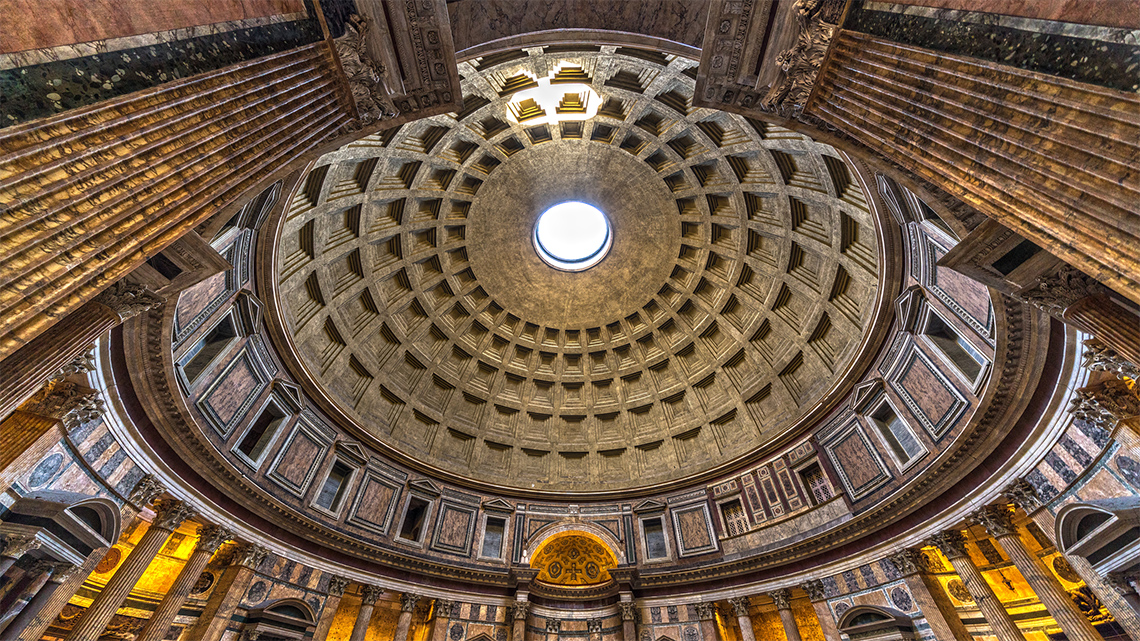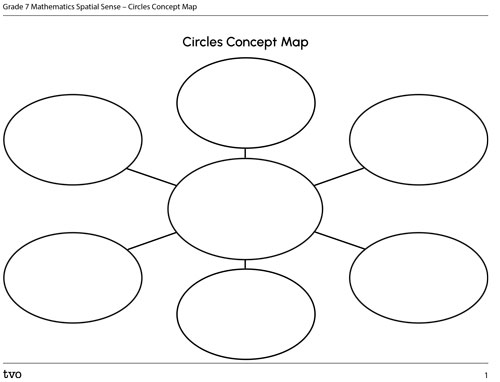Minds On
Notice and wonder
Explore the following images. What do you notice? What is the common theme?
Action
Constructing circles
You may have noticed that each image in the Minds On section contained circles or semi-circles. The circle is an important shape used in architecture, and can be found in ancient and modern structures because of its attributes. The circle is the strongest 2-dimensional shape. When it is used in structures, the circle allows stress to be evenly distributed throughout so it can support the structure without breaking.
We will explore how to construct circles. A circle is defined as a shape that has all points at the same distance from its centre. This means that all of the radii (plural of radius) are equal. The radius is any line drawn from the centre to its outer rim. This makes drawing a circle without tools challenging.
If you don’t have any tools to draw a circle, some ways you can make a compass are:
- three pencils and a rubber band
- a strip of cardboard
- a piece of string
- two pencils and a paper clip adjusted to the radius you need
- a digital drawing application, or another method of your choice

The important thing is to rotate on the centre.
Draw a line directly through the centre of the circle from one side to the other. Measure and label this line (this is your diameter), and divide it in half (this is your radius).
Try this activity again using different sized circular sizes. Remember to label the diameter and radius.
Constructing circles using tools
How to use a compass
Constructing circles with a compass is a precise process. For example, to construct a circle with a radius of 5 cm, you could use the following instructions:
- Open the compass and measure against a ruler to 5 cm.
- Place the point of the compass on your paper, and press gently.
- Turn the pencil, and pivot around the centre point.

This is a series of images that show a compass and pencil constructing a circle in various stages.

Drawing a circle with a compass and pencil. Step 1: set the length of the radius by adjusting the distance between the pencil tip and compass needle. Step 2, 3, 4, and 5: rotate the pencil 360 degrees while keeping the compass needle in place. Step 6: remove compass when the full circle is drawn.
Drawing circles to specific dimensions
The relationship between the radius and diameter of a circle is represented as d = 2r, meaning the diameter is equal to the radius times 2.
Brainstorm
How would you:
- construct a circle with a radius of 15 cm?
- construct a circle with a diameter of 7 cm?
Use a compass or record a description of all the steps you would take. You may also use another method of your choice to record your work.
Understanding the relationship between the circumference (C), diameter (d), and radius (r) helps to calculate unknown dimensions.

How would you construct a circle with a circumference of 25.12 cm?
Press ‘Answer’ to reveal the learning concept.
Formula for Circumference: C = πd
Fill in the dimensions with the information you know from the question.
C = πd
25.12 = 3.14 × d
To isolate the unknown variable – in this case diameter – divide both sides of the equation by 3.14.
8 = d
Now that you know the diameter is 8 cm, you can calculate the radius and construct the circle.
Construct the following circles. What is the diameter? What is the radius?
Press 'Hint' to reveal the formula.
Use the formula for circumference, C = πd.
- Construct a circle with a circumference of 28.26 cm.
- Construct a circle with a circumference of 47.10 cm.
- Construct a circle with a circumference of 18.84 cm.
Use a compass or record a detailed description of all the steps you would take using a method of your choice.
Consolidation
All about circles
What have you learned about the relationship between the radius, diameter, and circumference?
Using the following graphic organizer, a math journal, or an audio recording, explain what you have learned about the mathematical relationships in a circle, and describe how to use a compass.
Complete the Circles Concept Map in your notebook or using the following fillable and printable document.

Reflection
As you read the following descriptions, select the one that best describes your current understanding of the learning in this activity. Press the corresponding button once you have made your choice.
I feel...
Now, expand on your ideas by recording your thoughts using a voice recorder, speech-to-text, or writing tool.
When you review your notes on this learning activity later, reflect on whether you would select a different description based on your further review of the material in this learning activity.
Discover MoreYou are playing a game where the participants will try to toss a ball into three different sized circles cut out of the lid of a box.
Points are awarded as follows:
- large circle: 3 points
- medium circle: 5 points
- small circle: 10 points
The ball that you are using has a circumference of 38 cm. Calculate the diameter of the smallest circle that the ball can fall through.
What are some possible diameters for the medium and large circles?
Connect with a TVO Mathify tutor
Think of TVO Mathify as your own personalized math coach, here to support your learning at home. Press ‘TVO Mathify’ to connect with an Ontario Certified Teacher math tutor of your choice. You will need a TVO Mathify login to access this resource.
TVO Mathify (Opens in a new window)



